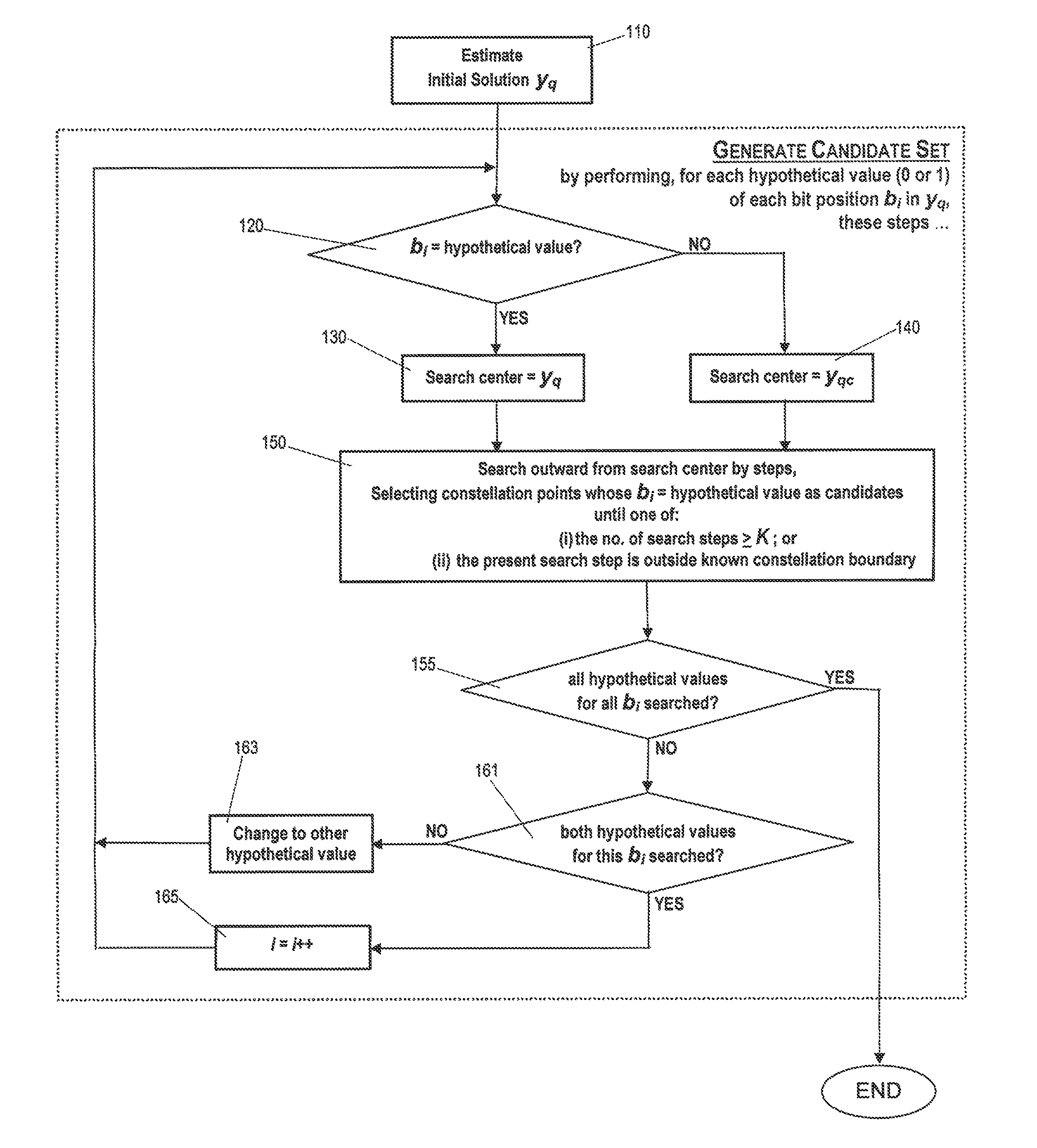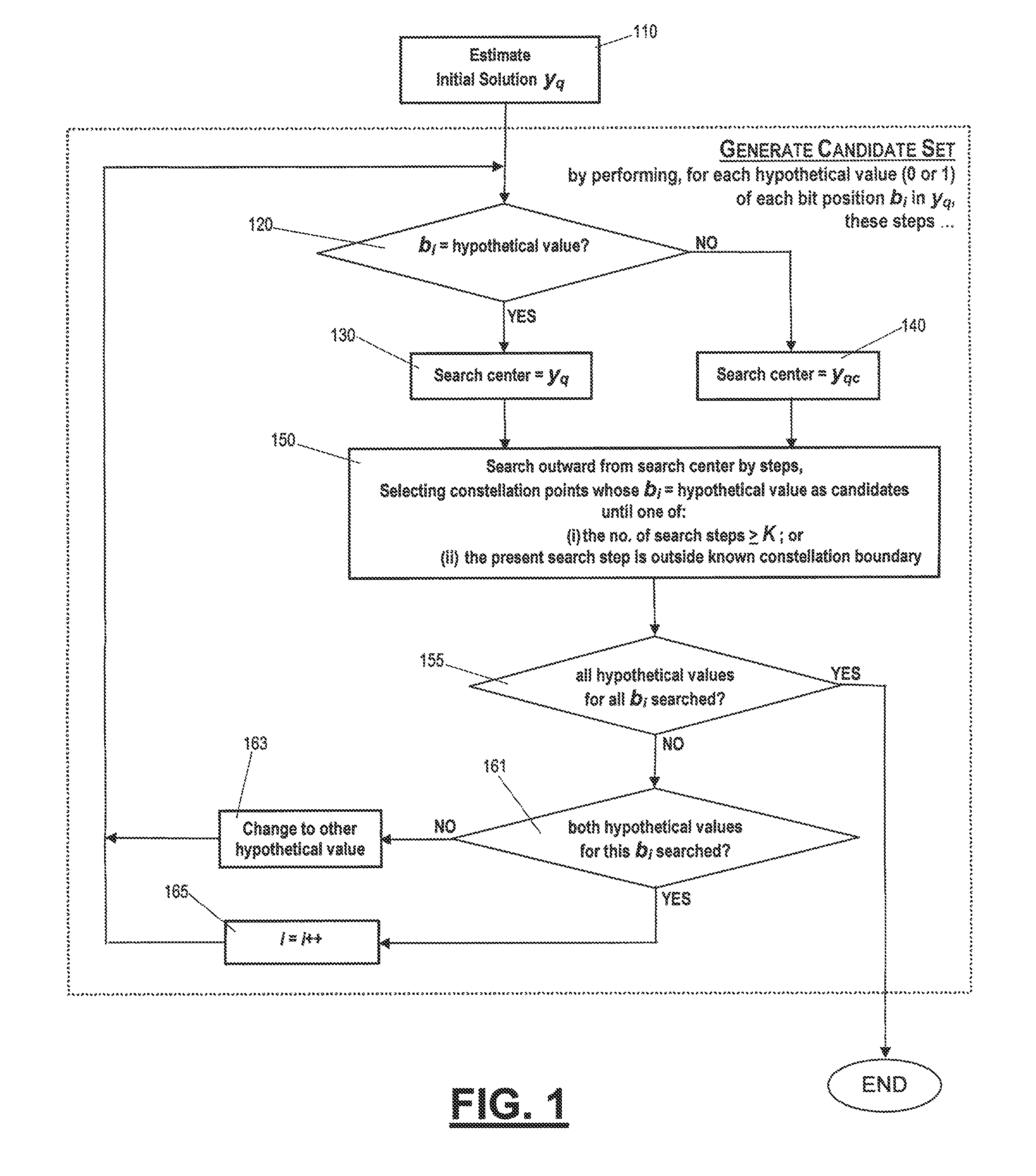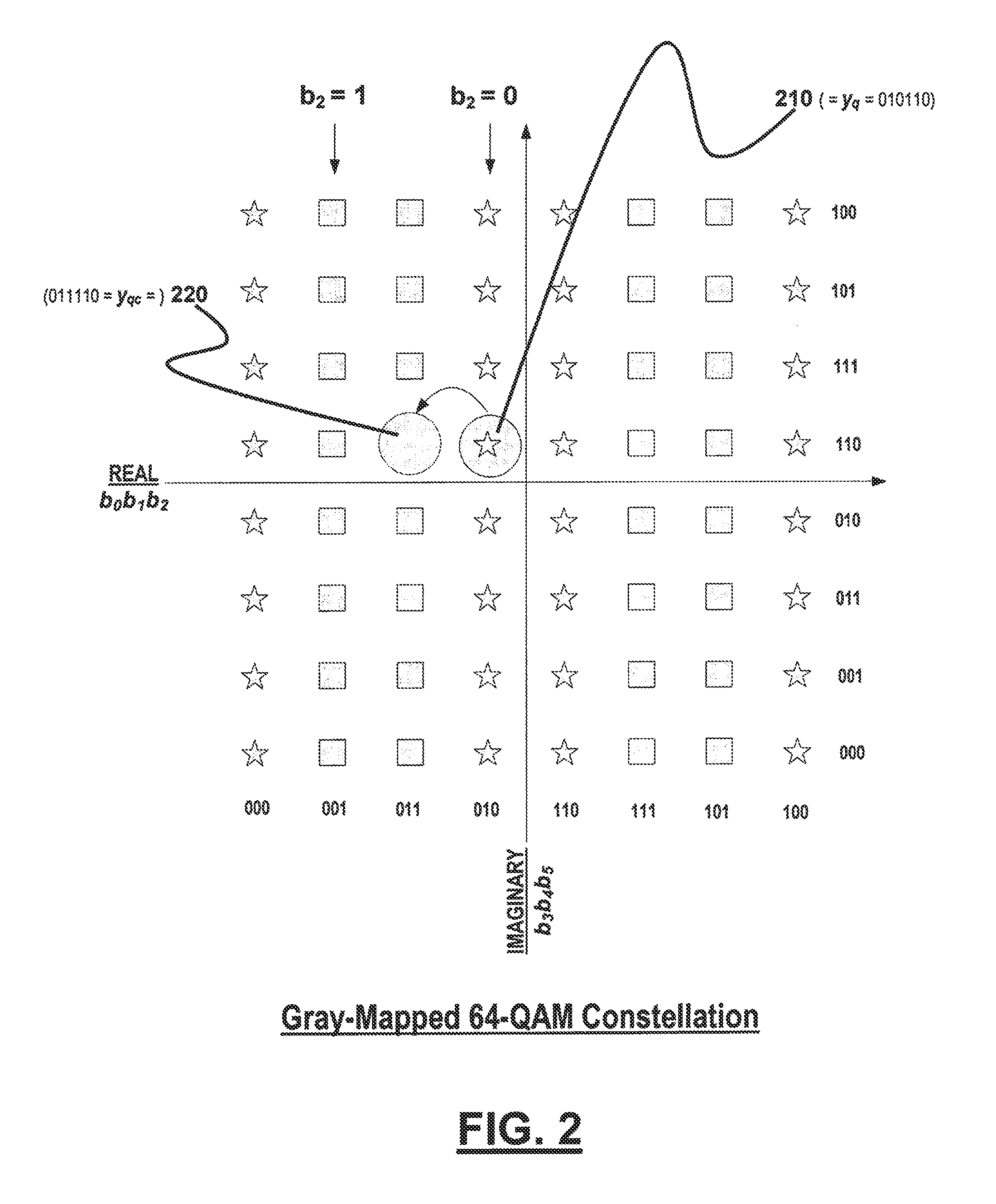Low complexity near optimal two spatial stream maximal likelihood detector
a detector and low complexity technology, applied in phase-modulated carrier systems, amplitude demodulation, coding, etc., can solve the problems of limiting dramatically increasing the computation complexity of a ml detector, unduly difficult detection methods for real time implementation, etc., to reduce complexity, reduce complexity, and limit the maximum processing throughput
- Summary
- Abstract
- Description
- Claims
- Application Information
AI Technical Summary
Benefits of technology
Problems solved by technology
Method used
Image
Examples
Embodiment Construction
[0021]Various embodiments of the present invention will now be described in detail with reference to the accompanying drawings. In the following description, specific details such as detailed configuration and components are merely provided to assist the overall understanding of these embodiments of the present invention. Therefore, it should be apparent to those skilled in the art that various changes and modifications of the embodiments described herein can be made without departing from the scope and spirit of the present invention. In addition, descriptions of well-known functions and constructions are omitted for clarity and conciseness.
[0022]A key feature of this invention is the selection of non-adjacent points, which include both hypotheses for all bit positions; this selective search space will generate a soft value with better accuracy without increasing the search space.
[0023]Two techniques are used to achieve this selective search space.
[0024]First, unlike conventional s...
PUM
 Login to View More
Login to View More Abstract
Description
Claims
Application Information
 Login to View More
Login to View More - R&D
- Intellectual Property
- Life Sciences
- Materials
- Tech Scout
- Unparalleled Data Quality
- Higher Quality Content
- 60% Fewer Hallucinations
Browse by: Latest US Patents, China's latest patents, Technical Efficacy Thesaurus, Application Domain, Technology Topic, Popular Technical Reports.
© 2025 PatSnap. All rights reserved.Legal|Privacy policy|Modern Slavery Act Transparency Statement|Sitemap|About US| Contact US: help@patsnap.com



